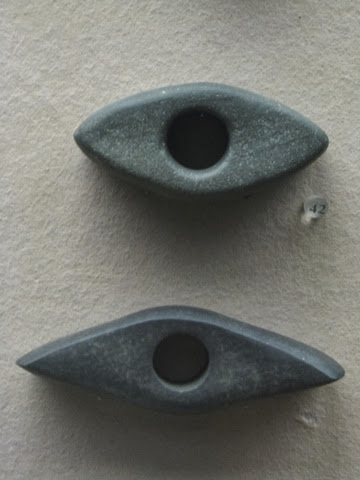Students worked very hard on the exercise, most spending the entire two hours we had scheduled for lab. My observation of their work and the nature of their responses led me to several questions.
First, a note on the responses. Most striking was that students classified as "subjective" any statements about the gracefulness, beauty, balance, or elegance of Paleolithic and Neolithic tools. Interesting because beauty aside, the first essay of this semester discussed the "beauty" or "elegance" of problem-solving in both scientific and artistic contexts. But what about the evidence in front of them?
My close reading of students' responses led to a couple of questions. First: how do people make decisions about what's objective or subjective? Were there key words, phrases, or ideas that students distinguished as one or the other? I know these judgements were not made in haste because I listened in to all of the discussions. Students seriously debated this stuff.
My second question asks what it takes to persuade someone about the "objectivity" of a statement. Perhaps it's a matter of the eye of the beholder. This is the first time many of my students have seen objects like these. Maybe, because of unfamiliarity, bias, or perception, ideas of gracefulness, balance, and beauty don't come to mind when students observe these objects.
I engaged a few students in a discussion of the iPhone, the beautiful new ios 7 operating system, and less than stunning alternatives. They insisted that sales and profit are the most plausible reasons for excellent design in these contemporary tools. I wonder if they thought about utility.
It comes down I think to a re-training of the eye, an appreciation for the deep historicity of these objects, and acknowledgement that beauty and utility go hand in hand.




I think I wrote this in one other response this week, "form follows function." It seems that graceful form leads to efficient balanced function. Applied to design, form of athletes or dancers, leaves on a tree, or architecture, it seems to be true.
ReplyDeleteMaybe as technology advances the design, form, and function possibilities of an object, ir becomes harder to see the inherent beauty or symmetry vs historical or handmade objects. Do machines destroy this symbiotic element to design or just change it? Beauty is in the eye of the beholder.